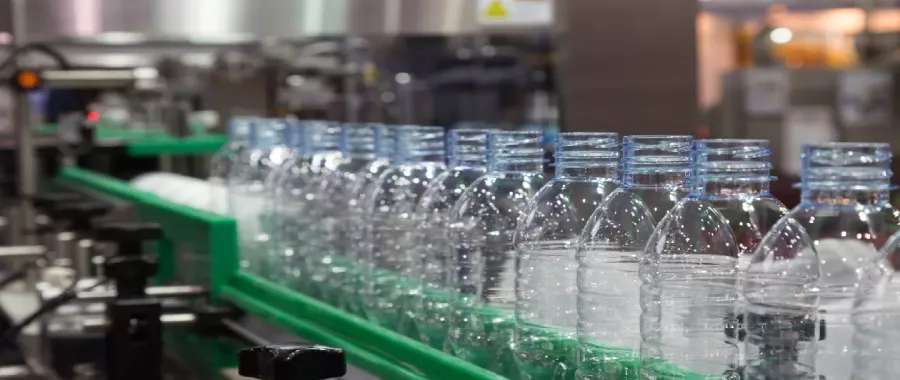Growing consumer awareness and increasingly stringent regulatory demands have resulted in renewed emphasis on the quality of water and selection of disinfectants used for the washing and preparation of vegetables, salads and other fresh produce.

Microorganisms can contaminate salads, fruits and vegetables from any number of sources – fertilisers used for growth, water used for irrigation and the use of pesticides and bacteria from animals can all impact the cleanliness of fresh produce. It is therefore vital that before being placed on the market, fruits and vegetables must be thoroughly and suitably washed to reduce the health risks of contamination from bacteria, such as E.coli.
Foodborne illnesses are a concern for producers, wholesalers, retailers and consumers, and the consequences of not adhering to food safety standards are severe. In 2016, a national outbreak of E.coli 0157 caused 161 cases of illness in Britain, with two fatalities. Following an investigation undertaken by Public Health England (PHE) and working with the Food Standards Agency (FSA) and Local Authority Environmental Health, mixed salad leaves were identified as the likely cause of the outbreak.
Sanitising salads
For several decades, chlorine has been used to wash fresh fruit, vegetable and salad products to kill microorganisms and remove pesticides (M.E. Parish, 2003). Even today, chlorine is heavily relied upon for sanitation purposes – but it does have its disadvantages. Its limited effect in destroying microorganisms on the surface of salad leaves means that high dosages of chlorine are often used, sometimes with limited added benefit and often leaving a residue on the produce to be consumed by customers. (Xu, 1999)
While the use of chlorine at high levels when processing non-organic fresh produce is still permitted, there are many reasons why food manufacturers should look for alternative products and processes for cleaning and disinfection. Reasons to avoid the use of chlorine include the health concerns around the safety of fresh produce due to the carcinogenic by-products of chlorine-use (Jennifer L. Banach, 2015), as well as the increasing environmental concern around the levels of chlorine in discharged waters. (A Abarnou, 1992) Some EU countries have already taken steps to limit the use of chlorine when washing fresh produce, with the UK limiting free and total chlorine levels in wash water as well as the produce to water ratio. (Jennifer L. Banach, 2015).
Clean without chemicals
Traditionally, the treatment process would include adding an absorbent material to help encourage the dirt particles to clump together and settle to the bottom of the water tank, as well as a disinfectant (often chlorine) to destroy the remaining microorganisms and bacteria. As an efficient and more environmentally-focused alternative to chlorine, Ozone is a powerful disinfectant that offers the benefits of effective microbial quality control of circulatory water, without the need for halogen-based chemical biocides or disinfectants.
Ozone is an inorganic molecule (O3) and an allotropic form of oxygen which can be formed naturally in the atmosphere by the discharge of electricity during a thunderstorm. When produced within an Ozone generator, a high voltage of electricity is passed across a gas stream containing oxygen. The energy of the high voltage splits an oxygen molecule (O2) into two oxygen atoms (O), which recombine with ordinary molecules of oxygen (O2) to form ozone (O3).
Ozone gas treats the water using a process called Ozonation. With Generally Regarded as Safe (GRAS) status granted by the United States Food and Drug Administration (FDA), Ozone can be used for all food products without restriction (excluding milk, which has its own specific regulations). Ozone is not yet significantly used in this application in Europe, but GRAS applies to Ozone use in the US.
Tests have shown that Ozone controlled at 2 mg/ltr in the wash water can achieve a greater than 99 percent reduction in surface microbial populations, equal to or better than that achieved with chlorine at levels of up to 50 mg/ltr.
Ozone is particularly effective against E. Coli, the food pathogen of most concern in the produce industry (C*T for 99 per cent deactivation, 0.02 for ozone against 0.4-0.75 for chlorine dioxide). It is not just about its capacity to disinfect, either. Ozone is a tried, tested and examined method, with research showing it is 1.5 times stronger than chlorine. In fact, Ozone can also control the taste and smell of the fresh water without the risk of hazardous by-products. (Xu, 1999)
Benefits of sustainable production
For the food industry, safety is the most important factor. However, as with any organisation, sustainability, energy efficiency and corporate responsibility are also increasingly important focuses. Processing fresh produce involves high water usage through cleaning, sanitisation and manufacturing and thorough processing operations such as refrigeration. Due to the high water footprint associated with food production, evaluating water consumption and seizing the opportunity to reduce water usage - where possible - can support the food production industry by reducing both costs and the environmental pressure on water resources.
In a bid to minimise water consumption, organisations can recycle water, but it is vital to ensure that anything recycled is safe to use. In food production, wash water quality can be compromised as a result of soil and other contaminants on the fresh produce. After being used to wash fruit and vegetables, contaminated wash water will need treatment to bring it up to drinking water standard, if not higher.
Not only can Ozone treat water without the use of traditional halogenated chemicals, it can also support any organisation’s objective to minimise water consumption. The Ozone gas is produced ‘in situ’ within the Ozone generator to refresh and sanitise the water without contamination – an ideal water treatment option for reuse and recycling. Better yet, Ozone treats water to a degree of purity and freshness that is unachievable by any other means, destroying by-products, pesticides and toxic organic compounds without leaving toxic residues, in addition to controlling the taste and smell of the water. (Xu, 1999)
High quality water is a valuable resource that must be used considerately and maintained carefully to ensure high quality outputs and effective business performance. With growing demands on water use, two thirds of the global population may have limited access to freshwater resources by 2050, meaning high quality water will eventually become even harder to source. It is the purity and lack of residual contamination within Ozone that makes it the ideal choice for food processing.
Pesticides being introduced during growth phase.
No toxins
With Ozone, there are no residual compounds or toxins left on the product or in the rinse water. This is because Ozone has a short half-life, lasting between 10 to 20 minutes before it breaks down to natural oxygen. Meanwhile, chlorine causes concern when discharged into the environment, as it limits the ability for recycling and re-use of waste water. The lack of residual contamination in Ozone means that Ozone-treated wash water can be discharged to the environment or used for other applications without the need for additional treatment/decontamination of areas or products.
Fresh produce after wash-phase
While chlorine and other chemical compounds may seem like the easier option due to the lower capital costs, Ozone has shown to be more effective than chlorine and other disinfectants when used on a range of microorganisms. (Xu, 1999) Therefore, investing in long-term solutions can support sanitation objectives, as well as meet other business goals by reducing operating costs and minimising the overall impact on the environment through reduced water usage and cleaner waste water discharge.
How can SOCOTEC help?
SOCOTEC’s Water Treatment & Equipment team can assist with a range of services that use Ozone as a disinfectant, including Filtex Ozone units for cooling towers, OCS units for use on bottled water and food and beverage plants and OFG units for use in pharmaceutical and CIP. Click here to find out more.
References
- Chlorinated Waters Discharged to the Marine Environment – Chemistry and Environmental Impact, A. Abarnou, L. Miossec, 1992.
- Effects of Disinfectants on Preventing the Cross-Contamination of Pathogens in Fresh Produce Washing Water, 2015. Jennifer L. Banach, Imca Sampers, Sam Van Haute and H.J. (Ine) van der Fels-Klerx.
- Methods to Reduce/Eliminate Pathogens from Fresh and Fresh-cut Produce, M.E Parish, 2006. L.R Beuchat, T.V Suslow, E.H Garrett, J.N Farber, F.F Busta.
- Use of Ozone to Improve the Safety of Fresh Fruits and Vegetables, Xu Liangji, 1999.
Would your water systems benefit from Ozone disinfection?
Contact our Water Treatment & Equipment team today to see how we can support your requirements.

You might also like







Add new comment